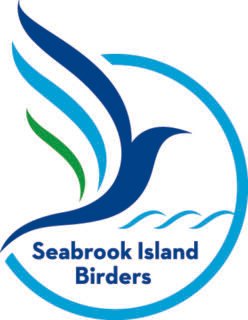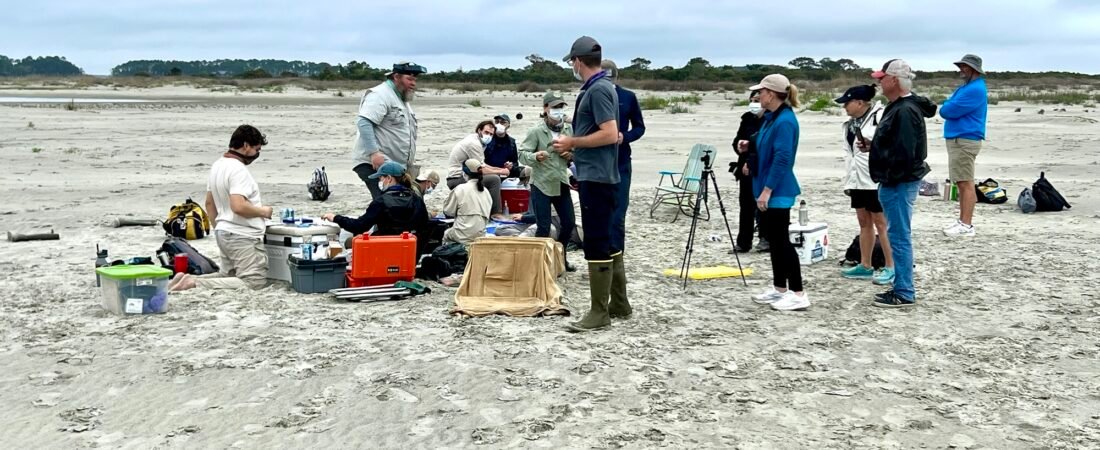Hello Red Knot fans!
This spring, 27 Red Knots were fitted with satellite transmitters during two banding events: 14 birds were tagged on Kiawah Island, South Carolina, on March 31st , and 13 more in Cape Romain National Wildlife Refuge, South Carolina, on May 18th. The project is a collaboration between the South Carolina Department of Natural Resources, Georgia Department of Natural Resources, South Carolina Cooperative Fish and Wildlife Research Unit, Wildlife Restoration Partnerships, Manomet Conservation Sciences, and U.S. Fish and Wildlife Service.
The solar-powered tags transmit each bird’s location every few hours by communicating with a network of satellites. You can learn more about how the tags and satellites work at this link.
Below are the flag codes for each bird that received a transmitter. Codes in italics are birds that are no longer actively tracking. These tags are not permanent and eventually fall off. In some cases, a tag may still emit signals even after detaching — often when it lands face-up. Although they could appear to be moving on the Animal Tracker App, the location is within the range of accuracy for the tag and therefore not real movement.
| Deployed on 3/31/25 on Kiawah Island SC: | ||
| 4U* | LA0 | LK8 |
| LA2 | LA3 | LL1 |
| LC1 | LA7 | PHA |
| LK1 | LC8 | PHP |
| LM2 | LK4 | |
| Deployed on 5/18/25 in Cape Romain National Wildlife Refuge SC: | ||
| LM9 | LN8 | LM6 |
| LN4 | LN0 | LM0 |
| LN5 | LP1 | LN9 |
| LN6 | LP7 | |
| LN7 | LP8 | |
Northern Migration:
Of the 27 tagged birds, we received at least partial northbound migration data for 23 individuals.
- The first bird to leave the Southeast departed on May 5, heading toward Delaware Bay.
- The remaining 22 birds left between May 19 and May 25. A handful followed the Atlantic coast to eastern Virginia, made brief stops, then shifted northwest across the Great Lakes toward James Bay. 2 more stopped in Delaware Bay before stopping in James Bay. Others flew directly north over land, straight over the Great Lakes into Canada before landing on the west shore of James Bay.
- One notable traveler, LA2, flew to Monomoy National Wildlife Refuge in Cape Cod, Massachusetts — a known horseshoe crab spawning site — and stayed for six days before flying northwest on June 1.

On Breeding Grounds:
Sixteen knots were tracked to Arctic breeding areas, arriving between June 7 and June 26. These birds settled across Victoria Island, Prince of Wales Island, Southampton Island and King William Island — all north of mainland Nunavut, Canada.
As of Now:
We think 15 transmitters are still on Red Knots.
- 11 have begun their southbound migration from breeding grounds
- 4 appear to still be on their breeding territories
All 11 birds that started migrating south have stopped for several days in James Bay and/or Hudson Bay, Canada. The southernmost bird, LK1, pinged in Cape Romain National Wildlife Refuge on July 22nd.

What’s Next:
As more birds continue their southward journey, we’ll be watching closely to see where they go next. Keep following their movements in the tracking app, and we’ll send another update as migration progresses. Feel free to share with others and let them know they can sign up to receive updates at this link.
Thanks again for your interest in these amazing birds!
Written by: Cami Duquet, Outreach and Stewardship Coordinator, Coastal Bird Program, SCDNR
Submitted with permission by Gina Sanders

